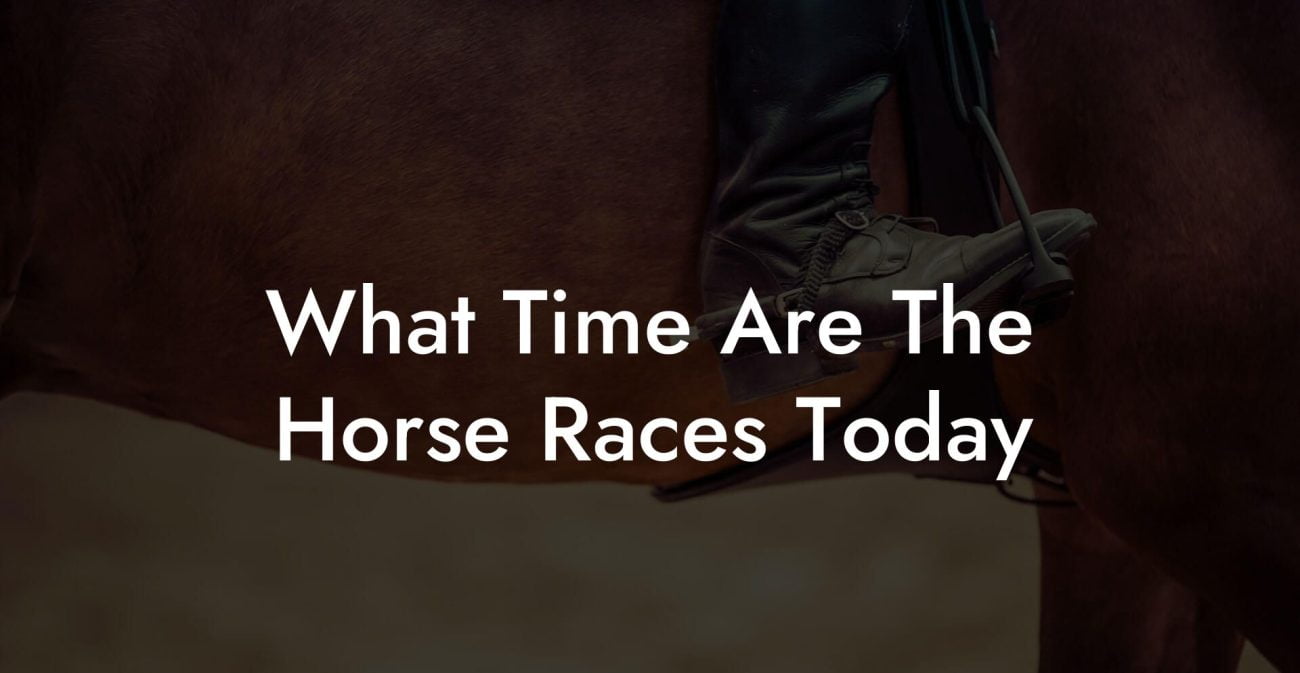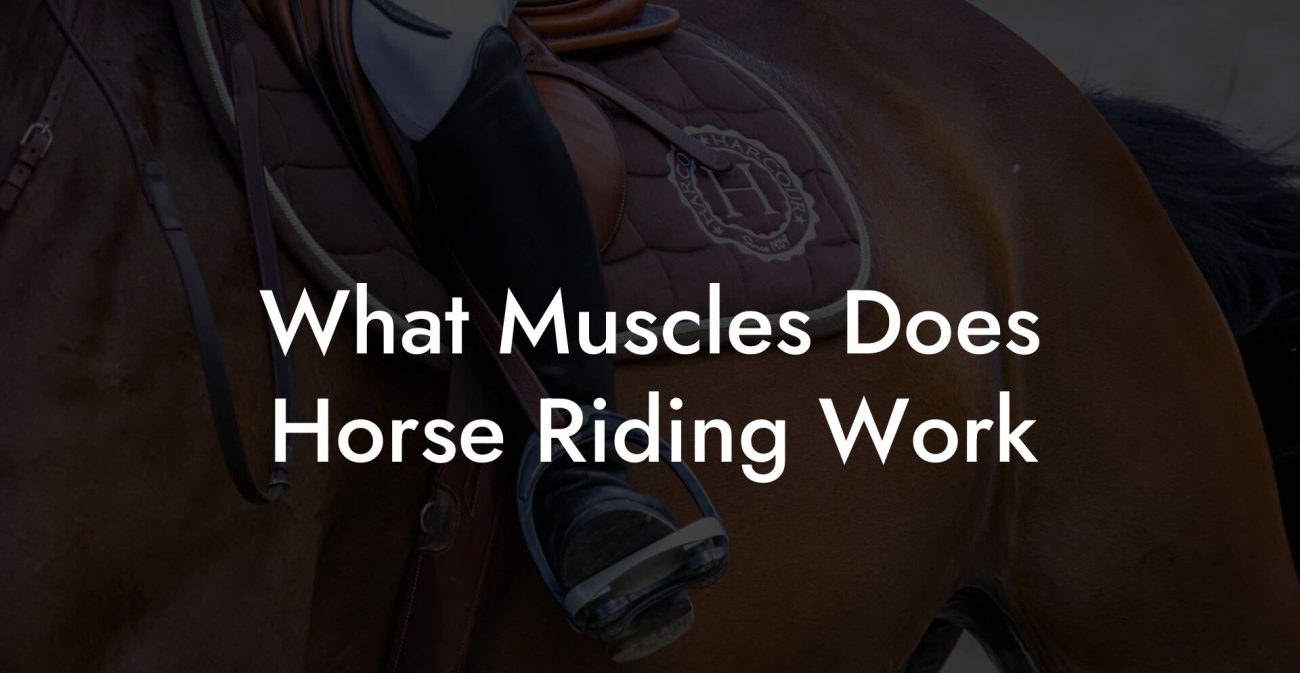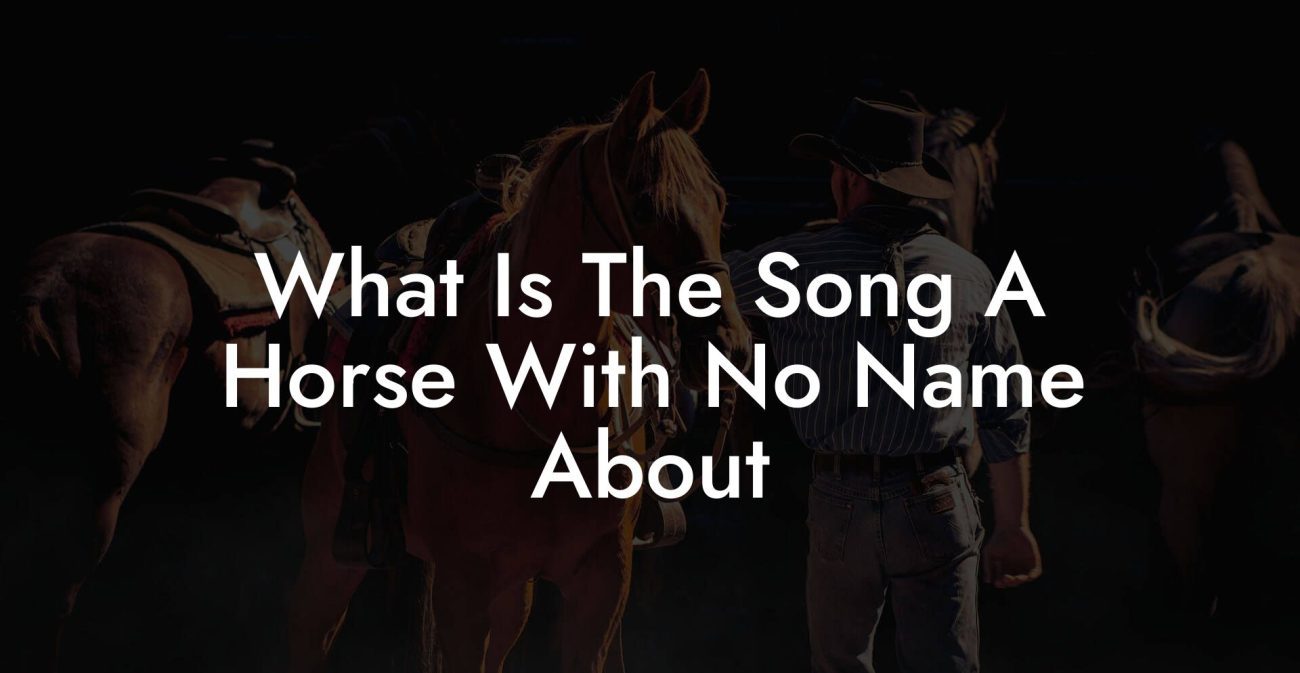Have you ever found yourself staring at a horse in the field and wondering, “What breed is that magnificent creature?” Whether you're a seasoned equestrian influencer or a curious Gen-Z newbie captivated by Insta-worthy horses, figuring out how to tell horse breeds apart can be as thrilling as uncovering a secret code in your favorite video game. This guide isn’t just about spotting physical differences, it’s a deep dive into the art and science of horse identification, blending expert insights with a dash of humor and a whole lot of passion for our equine friends.
Quick Links to Useful Sections
- Understanding the World of Horse Breeds
- Visual Traits: Your First Clues in Horse Breed Identification
- Physical Characteristics: Beyond the Surface
- Skeletal Structure and Conformation
- Hoof Structure and Gait Analysis
- Mane, Tail, and Coat Texture
- Behavior and Temperament: The Personality Behind the Breed
- Holistic Care and Identification: The Interplay of Observation and Experience
- Tools and Techniques for Accurately Identifying Horse Breeds
- Mobile Apps and Digital Guides
- Experts and Community Forums
- Traditional Books and Publications
- The Genetic Blueprint: What Makes Each Horse Unique
- Real-Life Case Studies: Stories of Breed Discovery and Expert Identification
- Case Study 1: Uncovering the Hidden Heritage of a Mysterious Mustang
- Case Study 2: The Elegant Arabian in a Modern Era
- Case Study 3: The Versatile Quarter Horse That Defied Labels
- Step-by-Step Guide: Creating Your Own Horse Breed Identification Plan
- Step 1: Educate Yourself
- Step 2: Use Visual Guides
- Step 3: Leverage Technology
- Step 4: Engage with the Community
- Step 5: Document and Reflect
- Resources and Community Support: Your Next Steps
- FAQs: Demystifying Horse Breed Identification
- Your Journey to Becoming a Horse Breed Detective
Understanding the World of Horse Breeds
The equine universe is as diverse as the memes circulating your socials. From the sleek Thoroughbred, known for its sprinting prowess on the racetracks, to the sturdy Clydesdale, famous for its big boots and even bigger personality, each breed brings a unique flair to the paddock. When you’re looking to tell horse breeds apart, you’re not just learning a list of names; you’re engaging in a journey that combines genetics, history, and visual cues.
Horse breeds have been developed over centuries for specific tasks, racing, working on farms, or simply gracing royal stables, and they reflect the unique needs and aesthetics of their time. This variety means that a keen eye for detail, combined with some knowledge of breed history and characteristics, can make you an instant horse breed detective.
In addition to recognizing common breeds, understanding genetic influences and historical context can add another layer of insight. As you explore this guide, keep an eye out for subtle nuances and patterns that distinguish one breed from another. Whether you’re attending a horse show or just scrolling through TikTok horse videos, the ability to identify breeds at a glance is a skill that never goes out of style.
Visual Traits: Your First Clues in Horse Breed Identification
When it comes to deciphering horse breeds, your eyes are your best tool. Visual traits such as body shape, mane and tail texture, and even the way a horse carries itself can be the first indicators of its breed. Much like how you’d recognize your favorite Instagram influencer by their style, spotting these visual markers can quickly narrow down your options.
One of the most noticeable visual cues is size. For example, draft horses like the Belgians or Percherons tend to be large and muscular, while breeds like the Arabian are usually more refined and light on their feet. Pay attention to posture and silhouette; how a horse’s neck, chest, and hindquarters are built can tell you volumes about its lineage.
Color patterns also play an important role. While many breeds share similar coat colors, patterns such as pinto, appaloosa spots, or the unique grey that “grows out” over time are strong identifiers. Even within breeds with similar color palettes, subtle differences in markings or shading can set one apart from another.
Don’t forget the head and facial structure, a horse’s face is like its calling card. For instance, the Arabian is celebrated for its dished face and large, expressive eyes, whereas the robust build of the Shire often comes with a broad forehead and a calm, amiable expression. These features not only enhance their beauty but also reveal their ancestry.
Physical Characteristics: Beyond the Surface
Once you’ve grasped the overall visual traits, it’s time to delve into the finer details that can distinguish breeds beyond mere appearances. This section is where you’ll learn about the subtle yet significant features that often require a closer look. Think of it as tuning into the high-definition version of your favorite show.
Skeletal Structure and Conformation
Just like every selfie angle matters, the skeletal structure of a horse is key to understanding its breed and purpose. Horses naturally have different body conformations, which affect their athleticism, temperament, and even the types of sports they are best suited for.
Draft breeds, for example, typically have a shorter, stockier build with broad chests and massive hooves, optimized for strength and endurance in heavy labor. In contrast, breeds bred for speed, such as Thoroughbreds, lean more towards a lighter build with long, powerful legs designed for rapid movement. By studying the conformation details, like the angulation of the shoulder, the length of the stride, or the curvature of the back, you can start piecing together the breed puzzle.
Hoof Structure and Gait Analysis
Ever noticed how some horses seem to glide effortlessly while others take a bit more of a trot? The differences in gait and hoof structure can be a goldmine of information. Gait analysis isn’t just for professional trainers; even casual observers can note if a horse has a flashy, high-stepping walk typical of a show jumper or a more grounded trot common in everyday riding horses.
Hoof shape and size are also revealing. A well-formed hoof can be an indicator of a breed’s working background. For instance, hardy breeds like the Icelandic horses have uniquely structured hooves that allow them to navigate rocky terrain, while other breeds might show a more delicate hoof structure, better suited for speed and agility on smooth tracks.
Mane, Tail, and Coat Texture
Running your fingers through a horse’s mane might seem like a small detail, but it provides significant clues to breed identity. Thick, wavy manes could point to breeds known for their resilience in harsh climates, whereas sleek, straight manes hint at breeds with a focus on elegance and performance. The tail can be an equally distinctive feature, its length, density, and even the way it moves with the horse hint at breed and lineage.
Coat texture and shine can further guide your identification process. Some horses boast a silky, almost luminescent coat, a trait that has made them a favorite in competitive dressage, while others exhibit a rougher, more matte finish indicative of breeds that have adapted to rugged, outdoor living.
Behavior and Temperament: The Personality Behind the Breed
While physical attributes are crucial, the personality of a horse can be just as telling. Every breed has its own unique temperament shaped by its historical role and genetic makeup. Observing behavioral cues, such as how they react to new stimuli, their energy levels, and even their social interactions, can provide excellent insights into their breed characteristics.
For example, Arabians are renowned for their spirited and intelligent demeanor. They’re often more alert and sensitive, reflecting their history of being bred for endurance and long journeys. On the other hand, quarter horses typically exude friendliness and a calm, sure-footed nature, making them versatile for work and leisure.
Additionally, some breeds are naturally more independent or stubborn, while others may be more docile and eager to please. These behavioral tendencies not only affect how you might interact with a horse but also dictate the kind of training and care they need. So the next time you see a horse with a fiery glint in its eye or a laid-back smile on its face, you might just be witnessing the signature traits of its breed.
Even the way a horse responds to routine tasks, like grooming or feeding, can offer hints at its breed. The interplay of instinct and training in their behavior is a living testament to their heritage and purpose.
Holistic Care and Identification: The Interplay of Observation and Experience
Identifying a horse's breed is only one piece of the puzzle; understanding how to care for them is where the real magic happens. Think of it as multidimensional horse care that goes beyond the obvious. Once you can tell breeds apart, you’ll likely be inspired to tailor your riding, training, and maintenance routines to suit each horse’s unique characteristics.
Caring for a horse requires a blend of art, science, and empathy. It means honoring their breed-specific needs and respecting their inherent personalities. For instance, a high-energy Thoroughbred might thrive on challenging workouts and varied routines, while a more placid draft breed might benefit from daily, gentle exercise and a slow, methodical approach to training.
nutrition, too, plays a critical role in maintaining the health of different breeds. High-performance horses need diets that support their energy demands, while older or less active breeds require well-balanced nutrition focusing on joint health and muscle maintenance. By combining your breeding knowledge with sound equine care, you create a nurturing environment that allows each horse to flourish.
Furthermore, grooming routines can be adjusted based on a breed’s coat and mane texture. Regular grooming not only keeps a horse looking its best for social media-worthy snapshots but also provides an opportunity for close observation, a chance to appreciate and identify subtle breed-specific features.
Tools and Techniques for Accurately Identifying Horse Breeds
Let’s get into the nuts and bolts (or should we say, the horseshoes and hay bales) of what you can use to hone your horse identification skills. Today’s digital age has blessed us with a treasure trove of resources, from mobile apps to interactive online encyclopedias, that can help decode the intricacies of horse breeds.
Mobile Apps and Digital Guides
Imagine having a pocket-sized equine expert at your fingertips. Mobile apps that specialize in horse breed identification not only provide detailed descriptions, but many also include interactive image recognitions, breed comparison charts, and even augmented reality features. Just snap a picture, and let the app help you narrow down the breed possibilities!
These digital tools are particularly useful for equestrians on the go, whether you’re at a competition, a local farm, or just out for a scenic ride. They incorporate up-to-date breed databases and often include user-submitted photos and anecdotal care tips, blending technology with community wisdom.
Experts and Community Forums
Beyond digital tools, nothing beats the conversational wisdom found in expert communities. Whether you’re following renowned equestrians on social media or joining online forums dedicated to horse enthusiasts, engaging with experts offers real-life insights that apps might miss. Ask questions, share your observations, and get feedback from seasoned horse trainers and breeders.
Many communities even organize live Q&A sessions, webinars, and virtual tours of famous stables, which can greatly improve your understanding of breed-specific care. Networking with fellow equine lovers can open doors to mentorship opportunities and firsthand stories that bring the world of horse breeds to life.
Traditional Books and Publications
Let’s not forget the old-school charm of well-researched books and magazine articles. Though digital platforms dominate nowadays, printed guides still hold a wealth of information, including detailed breed histories, breeding standards, and expert tips on maintenance practices. They’re perfect for those moments when you crave a deeper, more tactile learning experience.
Whether through digital means or traditional print, the key is to remain curious and continuously seek out new information. The journey of identifying horse breeds is one that evolves as you gain more experience and share insights with others.
The Genetic Blueprint: What Makes Each Horse Unique
Diving into the genetics behind horse breeds is like unboxing a mystery package, it reveals the intrinsic factors that distinguish each animal. Genetic testing isn’t just for humans; modern technology has opened new avenues for understanding the lineage of horses. This scientific angle provides a backbone to many of the visual and behavioral traits you observe.
DNA tests can reveal the ancestral origins of a horse, uncovering mixes of Arabian, Thoroughbred, or even rarer European breeds like the Lipizzaner. This information is particularly valuable for breeders and competitive riders who want to optimize performance or preserve rare traits. Even if you’re not ordering a lab test yourself, understanding that every feature from a smooth coat to a high-stepping gait might have a genetic signature adds depth to your observations.
Moreover, breeders often use genetic data to maintain breed standards and improve overall health. By studying genetic traits, experts can predict temperament, predisposition to certain ailments, and even constellations of physical characteristics that define a breed. For enthusiasts, this scientific perspective reinforces the idea that a horse’s story is written not just in its appearance, but in its very DNA.
Embracing the genetic blueprint of horses elevates the conversation from casual observation to a deeper appreciation of how centuries of selective breeding have crafted these living works of art. It’s a reminder that every flick of the tail, every graceful movement, is the result of a meticulously refined heritage.
Real-Life Case Studies: Stories of Breed Discovery and Expert Identification
Sometimes the best way to grasp how to tell horse breeds apart is through real-life stories. Let’s explore a few case studies that showcase the blend of observation, intuition, and expert knowledge in horse breed identification.
Case Study 1: Uncovering the Hidden Heritage of a Mysterious Mustang
Meet Bella, a spirited Mustang roaming the rugged terrains of the American West. At first glance, Bella’s coat, built, and fiery spirit hinted at her wild origins, but a closer examination revealed subtle nods to a blend of Quarter Horse heritage. By studying her gait, conformation, and even the shape of her mane, local experts were able to trace her lineage back to a historic crossbreeding program that aimed to harness the best traits of both breeds. Bella’s story is a testament to the fact that even in the wild, detailed observation can unlock a treasure trove of breed information.
Case Study 2: The Elegant Arabian in a Modern Era
Then there’s Zara, a sleek, graceful Arabian whose signature dished face and high tail carriage immediately caught the attention of visiting equestrians. While Zara was a popular attraction at modern equestrian events, her breed-specific traits were often a topic of discussion among experts. Trainers noted her high energy and intuitive responsiveness, traits that are characteristic of Arabians, while her refined facial features sealed the deal. Zara’s case highlights how traditional breed standards are not only preserved but celebrated in contemporary settings.
Case Study 3: The Versatile Quarter Horse That Defied Labels
Finally, consider Duke, a robust Quarter Horse known for his versatility in both ranch work and competitive events. Duke’s powerful build, calm temperament, and quick, agile movements are hallmark traits of his breed. However, Duke’s lineage also carried a hint of influence from other American breeds, which made his identification an intriguing challenge for experts. Through detailed analysis and community input, Duke was proudly identified as a true representative of American equine ingenuity, a blend that underscores the adaptable nature of Quarter Horses.
These case studies not only illustrate the practical applications of breed identification techniques but also remind us that every horse carries a narrative shaped by nature, history, and human expertise. They’re a real-world testament to the art and science of telling horse breeds apart.
Step-by-Step Guide: Creating Your Own Horse Breed Identification Plan
So, how can you transform from a casual observer into a bona fide horse breed detective? The key lies in creating a personalized identification plan that blends observation with consistent practice. Here’s a step-by-step guide designed for modern enthusiasts:
Step 1: Educate Yourself
Start by familiarizing yourself with the major horse breeds and their defining traits. Keep a reference journal or a digital note with pictures, key characteristics, and breed histories. Bookmark reputable websites, equine forums, and even YouTube channels where experts break down breed differences.
Step 2: Use Visual Guides
Invest in quality photo guides and annotated charts. Notice the differences in conformation, mane texture, and facial features. Over time, running your eyes over these visuals will improve your ability to instantly spot subtle differences.
Step 3: Leverage Technology
Download mobile apps that specialize in horse breed identification. These apps may include augmented reality features to help you compare real-time photos of horses with reference images. They’re a fun, interactive way to bolster your skills.
Step 4: Engage with the Community
Join online equestrian groups and forums. Post your observations and ask for feedback. Attending local horse shows, farm visits, or virtual webinars can also provide practical, hands-on experience.
Step 5: Document and Reflect
Keep a detailed log of your sightings, including notes on color, conformation, temperament, and any other distinctive traits. Over time, you’ll begin to see patterns that will improve your identification accuracy. This log becomes your very own horse breed identification playbook.
Creating your personal plan is an ongoing process, each new encounter expands your knowledge base and refines your observational skills. Soon, identifying a breed will feel as natural as scrolling through your favorite social feed.
Resources and Community Support: Your Next Steps
The journey of mastering horse breed identification is best taken with community and resources at your side. Whether you’re a digital native or a traditional enthusiast, there are plenty of avenues to gain insights, share discoveries, and learn from experts.
Start by following major equine influencers on social media platforms where breed comparisons, care tips, and the occasional hilarious horse blooper are in abundance. Websites like EquusMag, The Horse, and reputable breed registries offer a wealth of detailed information.
Local equestrian clubs and riding schools are also excellent places to get hands-on experience. By attending events, joining workshops, or simply engaging in conversation with experienced riders, you’ll not only boost your knowledge but also forge meaningful connections in the equine community.
Finally, don’t underestimate the value of traditional learning. Books, magazines, and even local libraries can provide a treasure trove of information about horse breeds, historical contexts, and expert techniques for breed identification. As you build your knowledge network, you’ll find that every question leads to a new discovery.
FAQs: Demystifying Horse Breed Identification
Here are some frequently asked questions that tackle common challenges and curiosities about how to tell horse breeds apart:
1. What are the key visual markers to identify a horse breed?
Key markers include body size and conformation, head shape, mane and tail texture, and coat color and patterns. Each breed tends to have unique physical features that set it apart from others.
2. How does a horse's gait help in breed identification?
The gait can provide insights into a horse’s functionality and breeding background. For example, breeds developed for racing often have a long, efficient stride, while workhorses display a more grounded, steady gait.
3. Can digital tools really help me learn how to identify horse breeds?
Absolutely. Mobile apps and online guides offer interactive visual comparisons and can enhance your observational skills by providing real-time feedback and detailed breed information.
4. What role does behavior play in identifying horse breeds?
A horse’s temperament, energy level, and response to handling are closely linked to its breed. For example, Arabians are known for their spirited and sensitive nature, while Quarter Horses typically display calm versatility.
5. Are there any genetic tests available to confirm a horse's breed?
Yes, genetic testing can provide a detailed analysis of a horse’s ancestry, confirming breed composition and detecting any crossbreeding. This is especially useful for breeders and competitive riders.
6. How can I distinguish between breeds with similar appearances?
Focusing on subtle differences in conformation, mane texture, and behavioral traits can be key. Regularly consulting expert guides and engaging with equine communities can also help refine your skills.
7. Do environmental factors affect a horse’s appearance?
Yes, factors like nutrition, grooming, and climate can influence a horse’s coat and overall appearance. However, underlying genetic traits remain the most reliable indicators of breed.
8. Where can I find reliable online resources about horse breeds?
Websites like EquusMag, The Horse, and official breed registries offer accurate and detailed information. Social media groups and forums dedicated to equine interests are also great for ongoing discussions and updates.
9. Can I start identifying horse breeds on my own, or do I need expert training?
While expert training can accelerate your learning, you can definitely start on your own by using online resources, mobile apps, and community forums to guide you. Practice and continuous observation are key.
10. How do I connect with other equine enthusiasts for further learning?
Joining local equestrian clubs, attending horse shows, and participating in online forums or social media groups are all excellent ways to connect with fellow enthusiasts and experts.
Your Journey to Becoming a Horse Breed Detective
Embracing the art of telling horse breeds apart is as exhilarating as discovering a new viral trend. It’s a dynamic blend of observation, science, and cultural appreciation that transforms every ride into a mini-adventure. As you continue down this path, you’ll not only learn to distinguish a dashing Thoroughbred from a stately Morgan, but you’ll also unlock deeper insights into the care, training, and personality of each equine companion.
This journey is about more than just static facts, it’s about building a relationship with these majestic animals, learning from every brush stroke of their coat and every graceful movement. With each observation, you’re not only enhancing your equine IQ but also contributing to a vibrant community of horse enthusiasts who are as passionate as you are.
Remember, the ability to tell horse breeds apart is a skill that will empower you, whether you're photographing your favorite barn antics for that perfect Insta post, caring for your riding horse with tailored expertise, or simply enjoying the raw beauty of nature. Every element of your growing knowledge is a stepping stone towards a deeper appreciation of the rich tapestry that is the equine world.
So grab your notebook, load up that mobile app, join the dialogue in your favorite equestrian groups, and start exploring. Your journey to becoming a true horse breed detective begins right now, blending modern technology with timeless passion. Trust your eyes, trust your instincts, and let the fascinating world of horses inspire you every day.
Step into the field with confidence and an ever-growing curiosity, each horse you encounter is a story waiting to be told, a breed waiting to be recognized, and a potential lifelong friend eager to share its unique heritage with you. Welcome to the exciting, ever-evolving world of horse breed identification.













